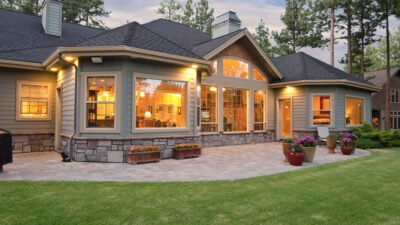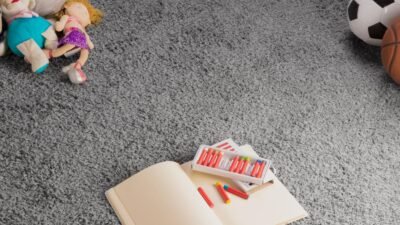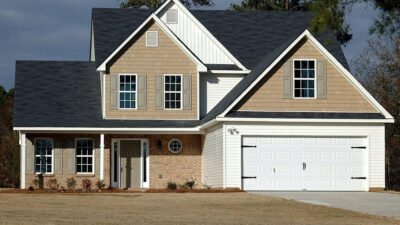Key Takeaways
- Choosing an energy-efficient AC unit can lead to substantial savings on energy bills.
- Proper installation and regular maintenance are crucial for optimal performance.
- Utilizing smart thermostats and natural cooling methods can further enhance efficiency.
Selecting the Right AC Unit
Installing a modern air conditioning (AC) system is a wise investment in comfort and cost-saving for your home, especially as extreme temperatures and heat waves become more common. While some homeowners hesitate at the initial expense, choosing to work with a reputable AC installation company can lead to long-term savings and ensure peak system performance and durability. Consider a holistic approach to AC installation and home efficiency to stay cool without straining your budget or sacrificing comfort. By choosing an energy-efficient air conditioner, you can lower monthly bills and ensure consistent comfort all year round. Understanding your AC options and home-efficiency strategies empowers you to make choices that benefit your lifestyle and finances for years. The AC unit is the heart of any efficient home cooling system, and modern models with elevated SEER ratings consume significantly less electricity. However, the efficiency of even the best model is compromised if it is not appropriately sized for your space. Prioritize models certified by the ENERGY STAR program and consider variable-speed compressors or inverter technologies that adjust output based on your home’s cooling needs. Consult a knowledgeable technician to identify the right capacity and features, ensuring maximum efficiency and investment.

Importance of Professional Installation
A high-quality AC means little if the installation is not handled correctly. Professional installation is vital in securing your new system’s performance, longevity, and efficiency. Certified technicians are trained to consider every aspect, from load sizing and ductwork arrangement to refrigerant charging and electrical safety. Improper installation can lead to issues like leaky ductwork, uneven cooling, and excessive energy consumption. Moreover, many warranties require professional setup for coverage.
Bringing in a trusted AC installation company ensures that every detail is managed according to manufacturer guidelines and local building codes. This investment offers peace of mind that your new system runs safely, efficiently, and reliably, and that any future service or warranty claims remain valid.
Regular Maintenance for Optimal Performance
Once your new AC is installed, ongoing maintenance is essential to keep it in optimal condition. This includes simple homeowner tasks like changing or cleaning air filters every 30–90 days and ensuring the area around the outdoor condenser is free of debris, as well as more technical work such as checking refrigerant levels, cleaning coils, and testing electrical connections, which a qualified technician should do.
Routine upkeep maintains performance, boosts system lifespan, and prevents minor issues from turning into expensive repairs or breakdowns. Homeowners should schedule a professional tune-up at least once a year, preferably in spring before the hot weather sets in. Proactive care can reduce unexpected expenses and help maintain low energy bills throughout the cooling season.
Leveraging Smart Thermostats
Smart thermostats are a game-changer in home climate control, making it easier to save money on cooling without sacrificing comfort. These devices allow precise, programmable adjustments; many models even use sensors or smartphone location data to help optimize settings automatically. Rather than cooling your home at full power when no one is present, a smart thermostat learns your patterns and reduces cooling output during unoccupied periods.
According to the U.S. Department of Energy, using smart or programmable thermostats to raise the temperature by 7–10°F for 8 hours per day can result in up to 10% annual savings on cooling costs. In addition, usage reports and maintenance alerts can provide insights to further optimize your system’s performance and efficiency.
Maximizing Smart Thermostat Savings
- Program personalized schedules for weekdays, weekends, and vacations.
- Activate geofencing features that adjust temperatures as you exit or arrive home.
- Utilize data-driven energy reports for continuous improvement in savings.
Enhancing Home Insulation
Insulation is a critical and often underestimated component of energy-efficient cooling. Attic, wall, and crawlspace insulation—whether using fiberglass, foam, or cellulose—acts as a thermal barrier, keeping your home cooler in summer and warmer in winter. Properly installed and maintained insulation minimizes unwanted heat gains that make your AC work harder, translating to lower utility bills and longer equipment life.
Additionally, air leaks around doors, windows, plumbing penetrations, and light fixtures are a significant source of wasted energy. Sealing these leaks with weatherstripping or caulk keeps your conditioned air where it belongs, contributing to stable indoor temperatures and less frequent AC cycling. Investing in insulation upgrades is one of the most cost-effective ways to improve comfort and energy efficiency year-round.
Utilizing Natural Cooling Methods
Combining mechanical cooling with natural methods can provide additional comfort and cost reduction. Use ceiling fans to circulate air, keep blinds or curtains closed during peak sunlight hours, open windows during low temperatures, and use strategic landscaping with shade trees or trellises near sun-exposed windows. These approaches require little to no financial investment and complement your air conditioner’s efforts, ensuring a cooler home even when the thermostat is higher.
Understanding Energy Efficiency Ratings
To make an informed AC purchase, compare models using energy efficiency ratings, such as the SEER rating, which measures how efficiently a unit converts electrical energy into cooling. Higher SEER ratings indicate greater efficiency and lower operating costs over time. ENERGY STAR certification is even more efficient, as certified units exceed federal standards and qualify for rebates. Experts recommend a SEER rating of at least 15 for new installations, with options with inverter-driven compressors and advanced controls reaching even higher ratings.
Exploring Financial Incentives
One of the smartest moves when upgrading to a modern, energy-efficient AC is researching incentives available in your area. Utility providers, state and local governments, and the federal government frequently offer rebates, tax credits, and zero-interest financing for homeowners who opt for high-efficiency cooling solutions. These financial incentives can dramatically lower the upfront cost of a new system, making state-of-the-art cooling more accessible than ever.
Check with your local utility provider and explore online resources such as the ENERGY STAR rebate finder to identify applicable programs. When you pair incentives with the savings from lower monthly energy bills, your return on investment arrives much sooner, making your efficient home upgrade one of the best decisions you can make this year.
Conclusion
Building a cool, comfortable, and cost-conscious home is best achieved by combining efficient equipment, expert installation, routine maintenance, innovative technology, and thorough home upgrades. By taking advantage of natural cooling tactics and financial incentive programs, you can maximize your comfort and savings year after year. Explore what’s available in your area and consult a trusted AC installation company to get the most out of your new system—and enjoy peace of mind, efficiency, and a blissfully calm indoor environment all summer.



